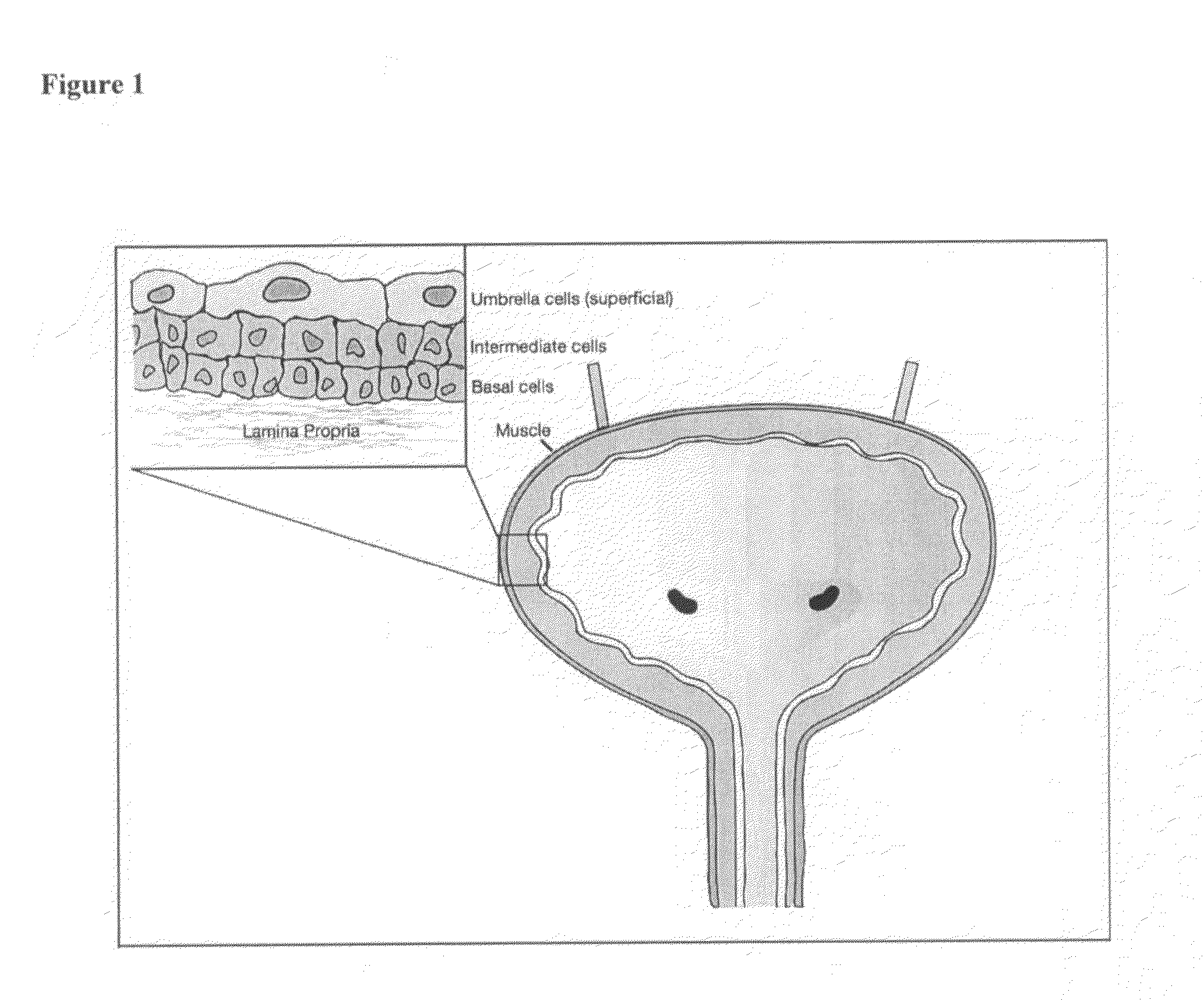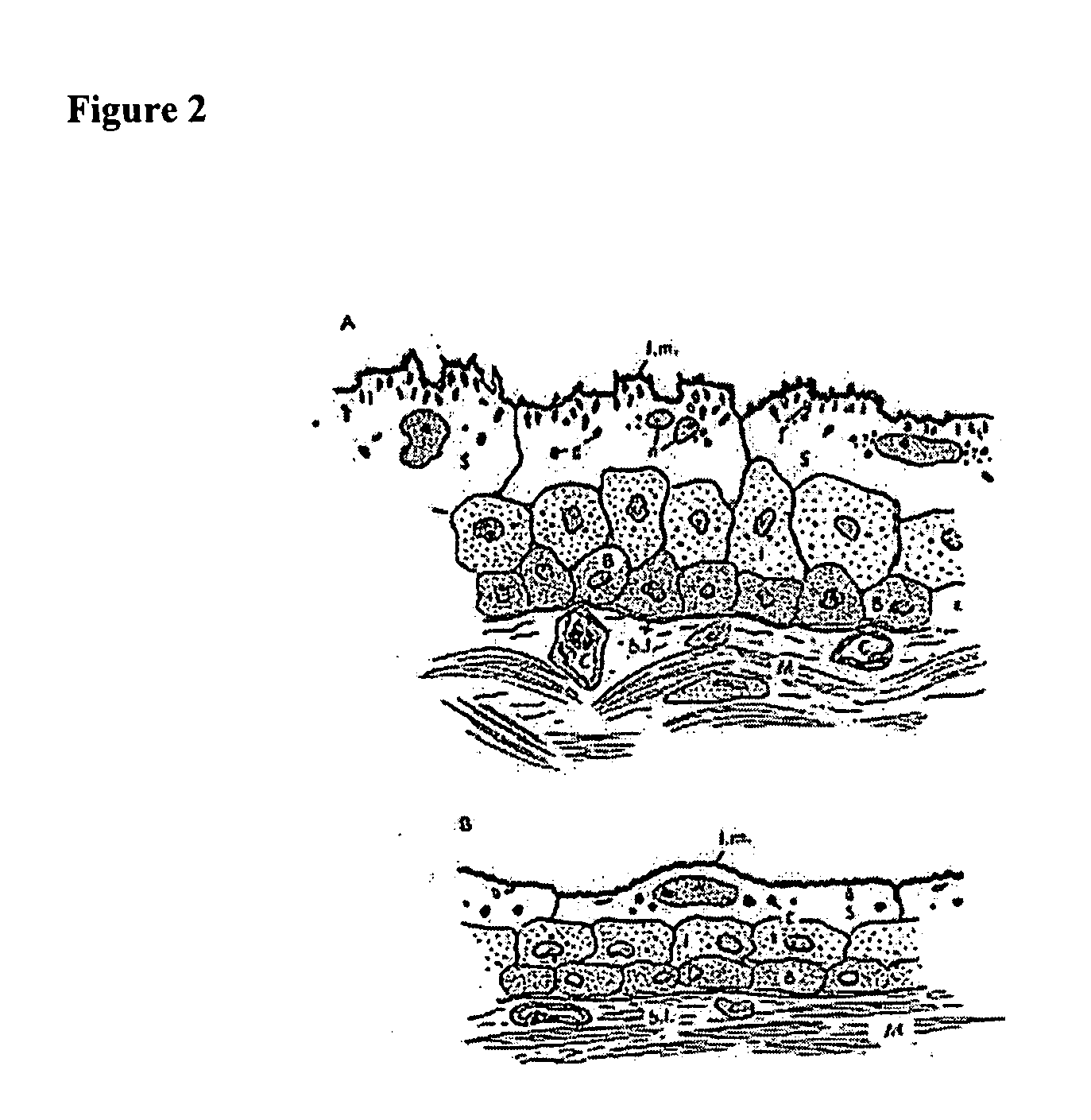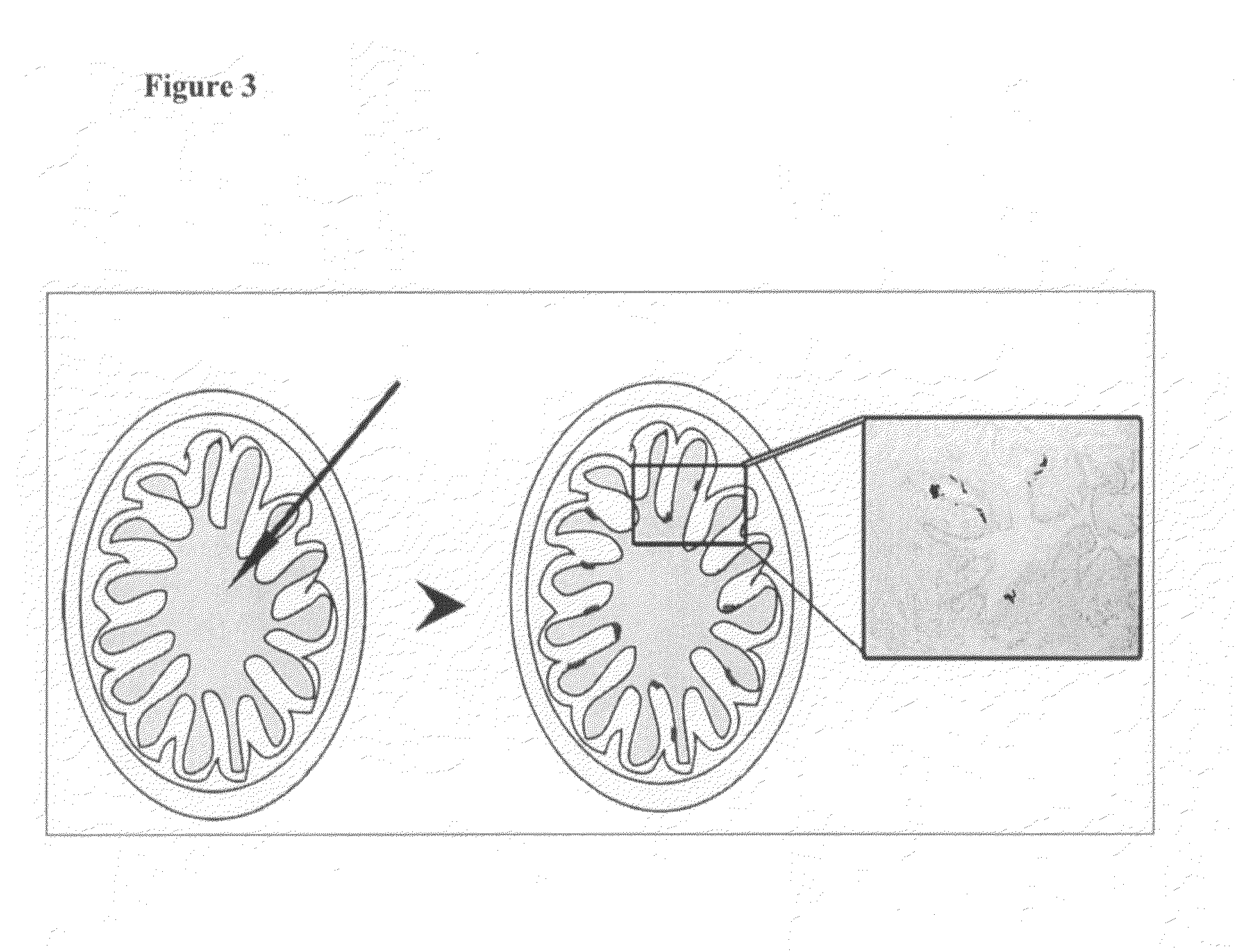Animal model for cancer, methods of producing the same and associated methods of use
a cancer and animal model technology, applied in the field of animals, can solve the problems of significant mortality and the current lack of understanding of the relationship between these precursors and each other
- Summary
- Abstract
- Description
- Claims
- Application Information
AI Technical Summary
Benefits of technology
Problems solved by technology
Method used
Image
Examples
Embodiment Construction
[0029]While the specification concludes with claims particularly pointing out and distinctly claiming the subject matter regarded as forming the present invention, it is believed that the invention will be better understood from the following preferred embodiments of the invention taken in conjunction with the accompanying drawings.
[0030]The present invention is based on the discovery that an animal model comprising the double knockout of at least one allele of p53 and Pten genes results in the creation of an autochthonous animal model for the study of bladder neoplasia, oncogenesis, and metastasis. In one embodiment, the transgenic animal having a disruption in the p53 and Pten genes, and demonstrating a bladder cancer phenotype is a mouse. The transgenic mouse provided herein presents a cancer pathology that originates in the bladder urothelium and ultimately progresses to invasive disease.
[0031]Mouse models have been used to understand various developmental stages and disease tha...
PUM
| Property | Measurement | Unit |
|---|---|---|
| weights | aaaaa | aaaaa |
| weights | aaaaa | aaaaa |
| weights | aaaaa | aaaaa |
Abstract
Description
Claims
Application Information
 Login to View More
Login to View More - R&D
- Intellectual Property
- Life Sciences
- Materials
- Tech Scout
- Unparalleled Data Quality
- Higher Quality Content
- 60% Fewer Hallucinations
Browse by: Latest US Patents, China's latest patents, Technical Efficacy Thesaurus, Application Domain, Technology Topic, Popular Technical Reports.
© 2025 PatSnap. All rights reserved.Legal|Privacy policy|Modern Slavery Act Transparency Statement|Sitemap|About US| Contact US: help@patsnap.com



